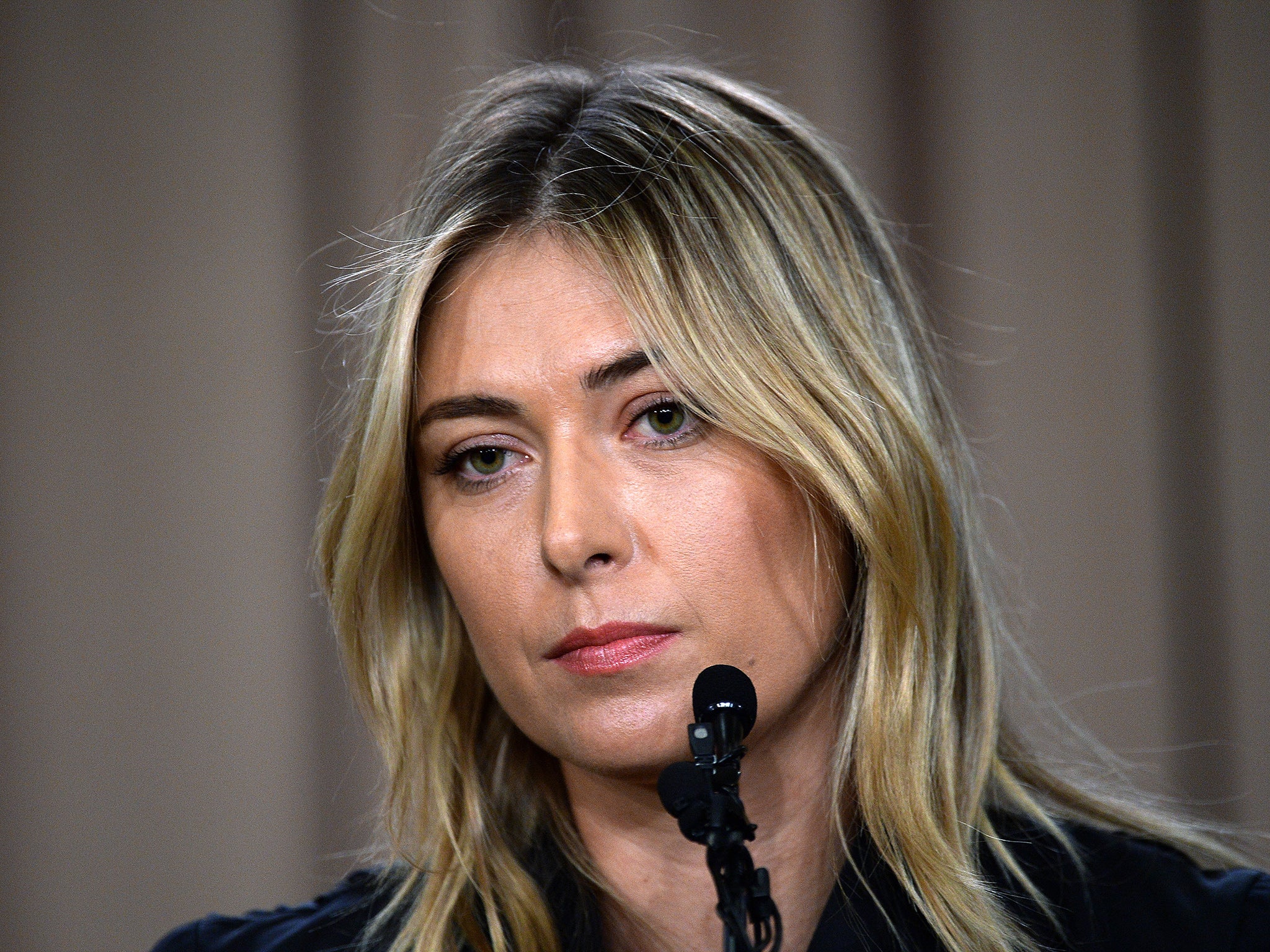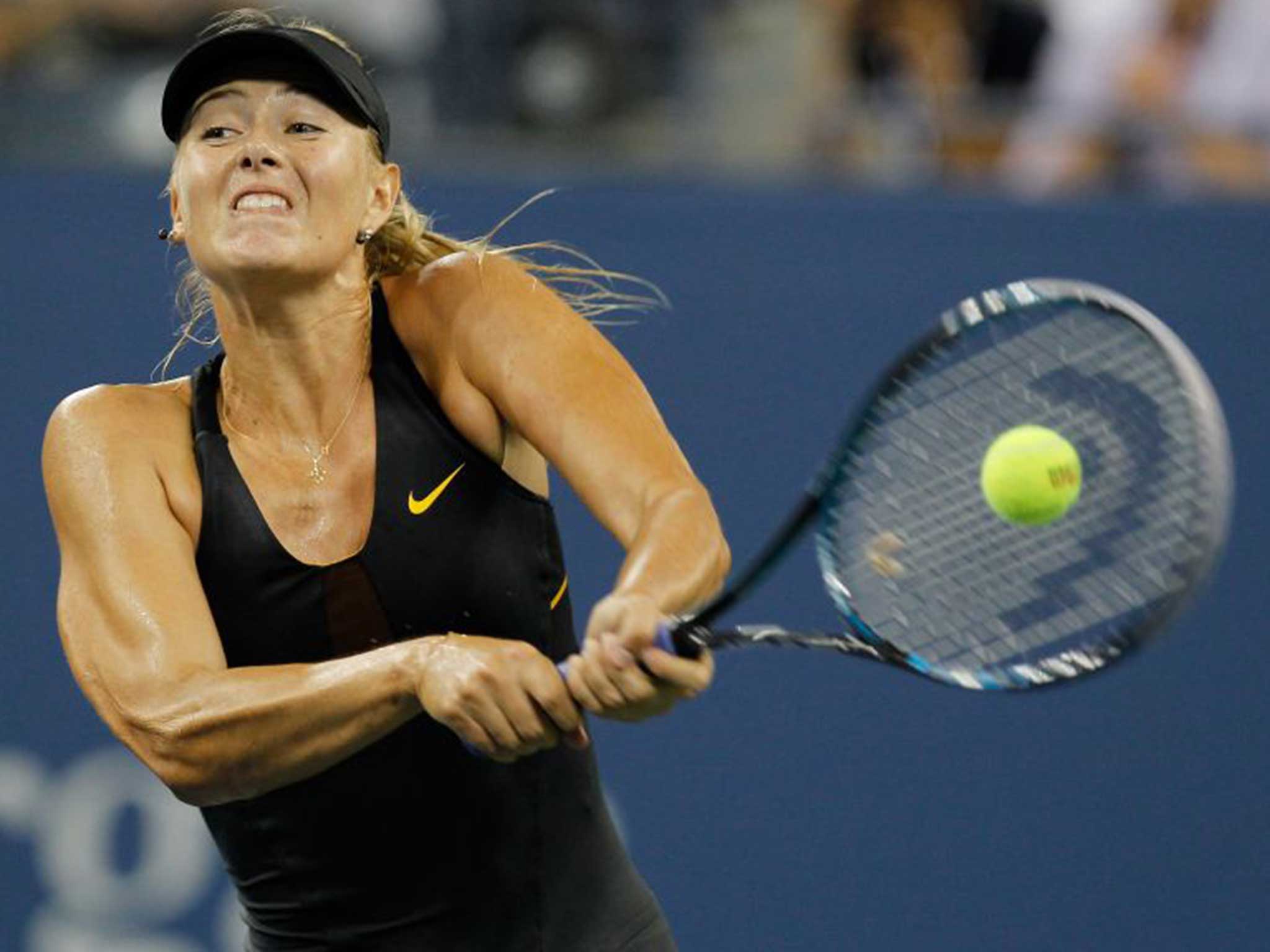Maria Sharapova: Meldonium story doesn't add up as complete incompetence leads to two-year ban
A tribunal decided that Sharapova was using meldonium to enhance her performance and not for genuine medical reasons

Your support helps us to tell the story
From reproductive rights to climate change to Big Tech, The Independent is on the ground when the story is developing. Whether it's investigating the financials of Elon Musk's pro-Trump PAC or producing our latest documentary, 'The A Word', which shines a light on the American women fighting for reproductive rights, we know how important it is to parse out the facts from the messaging.
At such a critical moment in US history, we need reporters on the ground. Your donation allows us to keep sending journalists to speak to both sides of the story.
The Independent is trusted by Americans across the entire political spectrum. And unlike many other quality news outlets, we choose not to lock Americans out of our reporting and analysis with paywalls. We believe quality journalism should be available to everyone, paid for by those who can afford it.
Your support makes all the difference.The final sentence of the findings of the independent tribunal investigating Maria Sharapova’s failed drugs tests says it all. “She is the sole author of her own misfortune,” the three-man panel conclude at the end of their 33-page report.
Whatever view you take of why Sharapova was taking the banned drug Meldonium – and the tribunal concluded that in the end she was using it to enhance her performance rather than for genuine medical reasons – the level of her incompetence in failing to realise that it was on a prohibited list is astonishing for someone who had otherwise been so professional in all areas of her life.
Sharapova convinced the tribunal that the original reason she started taking Meldonium – or more specifically the branded drug Mildronate – 10 years ago had indeed been to prevent recurring viral illnesses from which she had been suffering. A medical expert called upon by Sharapova to give evidence concluded that the prescribing of Mildronate in 2006 had been justified “both as a cardio-protective agent and as a preventative agent for diabetes”.
Meldonium was added to the World Anti-Doping Agency’s banned list at the start of this year because of growing evidence that athletes were using it to enhance performance. The tribunal reported that the drug, when taken shortly before exercise, had “a positive effect on energy metabolism and stamina”.
Dr Anatoly Skalny, the Russian doctor who originally prescribed Sharapova’s medication, which eventually comprised a mind-boggling total of 30 different medications and supplements, regularly consulted a Wada laboratory to check that everything was legal.
However, after Sharapova decided at the end of 2012 to stop following the doctor’s regime, because she found the taking of so many pills “overwhelming”, her steps to ensure that she was not ingesting anything on Wada’s banned list were remarkable in their lack of diligence.
For reasons which she failed to explain to the tribunal’s satisfaction, Sharapova continued to take three of the drugs originally prescribed by Dr Skalny, including Mildronate. According to her evidence, she did so without taking any medical advice.
Sharapova’s agent, Max Eisenbud, told the tribunal that, from 2013, he had taken responsibility for ensuring that she was not taking any banned substances. Sharapova’s father and, from 2013, Eisenbud were the only people in her entourage who knew she was taking the drug.
Although Eisenbud has done a great job managing Sharapova’s business affairs – she has been the world’s highest-earning sportswoman for more than a decade –he admitted to the tribunal that he did not have even a basic understanding of how Wada’s prohibited list works.
The tribunal reported: “He appeared to be unaware of the distinction between the brand names of the medications under which pharmaceutical drugs are marketed and the chemical names used in the Prohibited List. He did not know the ingredients of Mildronate or their chemical properties…. He made no records of the checks he carried out and he did not report back to Ms Sharapova.”
Eisenbud claimed that each November he would make a detailed check of what medication each of his players was taking – and whether they were on the banned list – while on holiday in the Caribbean. He said the reason he did not do this in November 2015 was because he did not go on holiday after separating from his wife.
The tribunal concluded: “The underlying factual puzzle in this case is how an elite player in the position of Ms Sharapova, with the assistance of a professional team including the very best sporting and medical advice obtainable, could ever have placed herself in the position of taking a Prohibited Substance, as is admitted, before each of the five matches she played at the Australian Open.”

Rejecting Eisenbud’s evidence, the tribunal said: “The idea that a professional manager, entrusted by IMG with the management of one of its leading global sporting stars, would so casually and ineptly have checked whether his player was complying with the anti-doping programme, a matter critical to the player’s professional career and her commercial success, is unbelievable.”
Both Wada and the International Tennis Federation had publicised the updating of the list of banned drugs – and the inclusion of Meldonium on it – from September of last year, but neither Sharapova nor Eisenbud made themselves aware of the changes.
Sharapova’s legal team claimed that the changes had not been publicised sufficiently. However, Wada and the ITF announced the updated list and in December the ITF sent emails to a number of people, including Sharapova and her agent, giving reminders about the anti-doping programme.
While Meldonium was not on Wada’s banned list until the start of this year, the tribunal concluded that Sharapova’s behaviour in recent years suggested that she believed she had something to hide.
It is indeed telling that, after coming off the regime originally prescribed for her in 2006, Sharapova only ever told one of the medical practitioners she consulted – the doctor for the Russian Olympic team – that she was taking Mildronate. Sharapova said this was because no other doctors ever asked her what medication she was taking.

Between 2012 and 2015 Sharapova was under the general care of a family doctor in California and was also treated by medical staff from the Women’s Tennis Association when at tournaments. Amongst others she failed to inform were her nutritionist, who was advising her after she decided to come off her original pill-taking regime, her physiotherapist, who was responsible for recommending recovery drinks during and after matches, her trainer and her coach.
Perhaps even more damningly, Sharapova failed to disclose her use of Mildronate on any of the doping control forms which players have to complete when taking drugs tests.
The facts are only consistent with a deliberate decision to keep secret from the anti-doping authorities the fact that she was using Mildronate in competition
Doping control forms require players to inform testers of any drugs taken in the previous seven days. Between October 2014 and January 2016 Sharapova signed seven such forms and did not once disclose that she had been taking Mildronate, although she did list other substances.
However, Sharapova told the tribunal that she had taken Mildronate before each of her matches at the Australian Open. It was subsequently revealed that she also failed tests for Meldonium in 2015 at Wimbledon and at the WTA Finals and Fed Cup final later in the year.
Sharapova told the tribunal she had thought that she had to declare only those items that she was taking every day in the previous seven days. At Wimbledon she had used Mildronate six times in the previous seven days, and at this year’s Australian Open had used it five times in the previous seven days.
The tribunal ruled that Sharapova’s argument was “untenable”. It stated: “The facts are only consistent with a deliberate decision to keep secret from the anti-doping authorities the fact that she was using Mildronate in competition.”
It added: “She has no excuse for failing to disclose her use of Mildronate or to seek advice from a specialist doctor as to whether its continued use in competition was permissible.”

The tribunal concluded that, whatever her position may have been in 2006, “there was in 2016 no diagnosis and no therapeutic advice supporting the continuing use of Mildronate. If she had believed that there was a continuing medical need to use Mildronate then she would have consulted a medical practitioner. The manner of its use, on match days and when undertaking intensive training, is only consistent with an intention to boost her energy levels.
“It may be that she genuinely believed that Mildronate had some general beneficial effect on her health, but the manner in which the medication was taken, its concealment from the anti-doping authorities, her failure to disclose it even to her own team, and the lack of any medical justification must inevitably lead to the conclusion that she took Mildronate for the purpose of enhancing her performance.”
Sharapova’s appeal to the Court for Arbitration for Sport, which has in recent years cut the drugs bans imposed on the tennis players Marin Cilic and Viktor Troicki, may yet have some success in reducing her two-year ban. However, the damage to her reputation contained in this damning report will surely never be undone.
Join our commenting forum
Join thought-provoking conversations, follow other Independent readers and see their replies
Comments